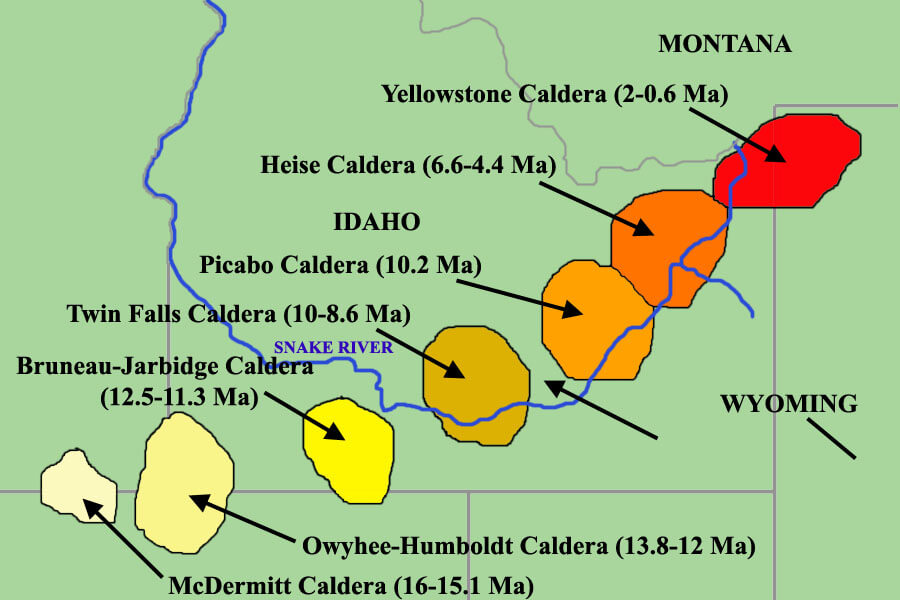The eastern Snake River Plain traces the path of the North American plate over the Yellowstone hotspot, now centered in Yellowstone National Park. The eastern plain is a topographic depression that cuts across Basin and Range mountain structures, more or less parallel to North American plate motion. It is underlain almost entirely by basalt erupted from large shield volcanoes. Beneath the basalts are rhyolite lavas and ignimbrites that erupted as the lithosphere passed over the hotspot. The central Snake River plain is similar to the eastern plain, but differs by having thick sections of interbedded lacustrine (lake) and fluvial (stream) sediments, including the Hagerman fossil beds.
Island Park and Yellowstone Calderas formed as the result of enormous rhyolite ignimbrite eruptions, with single eruptions producing up to 600 cubic miles of ash. Henry’s Fork Caldera, measuring 18 miles by 23 miles, may be the largest symmetrical caldera in the world. The caldera formed when a dome of magma built up and then drained away. The center of the dome collapsed, leaving a caldera. Henry’s Fork Caldera lies within the older and bigger Island Park Caldera, which is 50 miles by 65 miles. Younger volcanoes that erupted after passing over the hotspot covered the plain with young basalt lava flows in places, including Craters of the Moon National Monument. Return to Craters of the Moon
